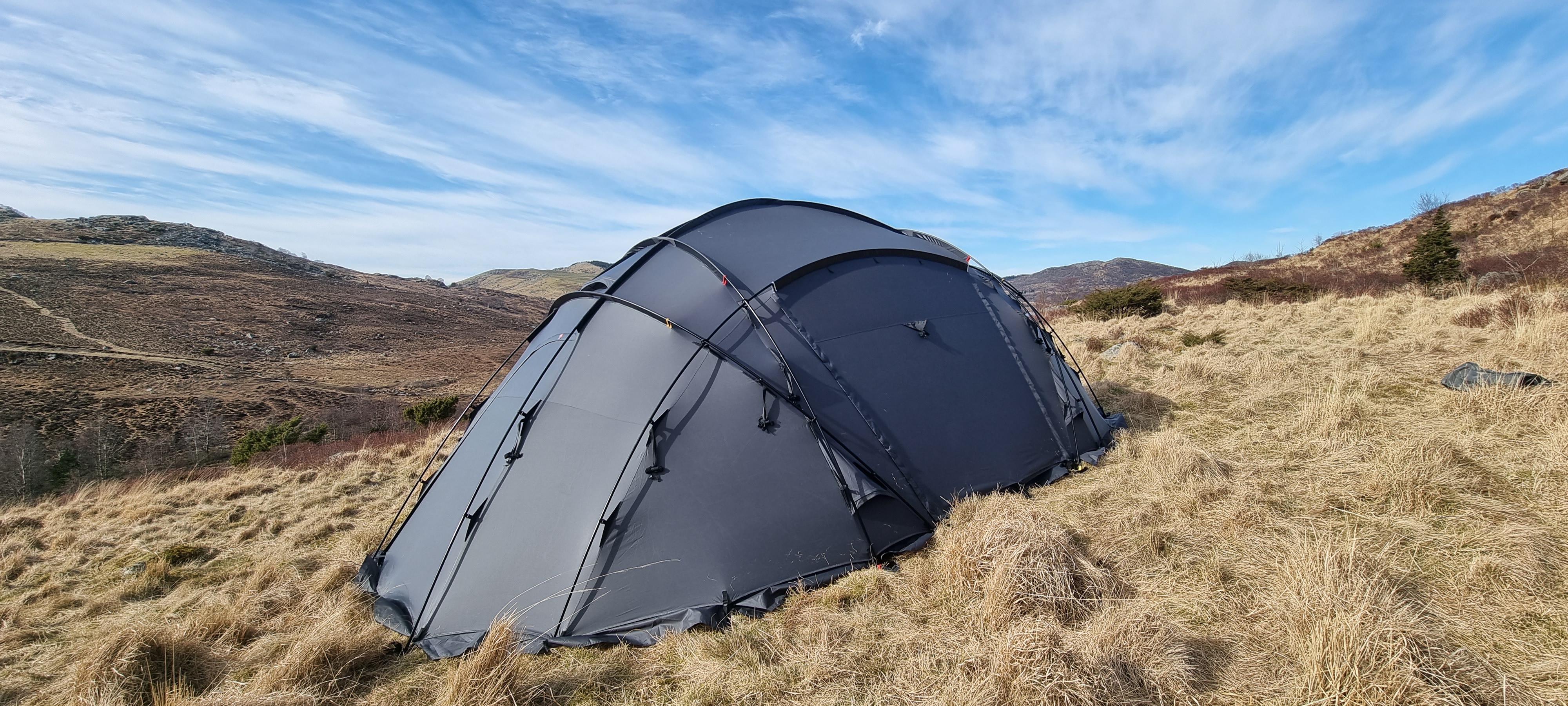Silnylon. It’s alive!
Well, not completely. But silnylon (nylon impregnated with silicone) is a very dynamic fabric. It stretches, moves, contracts and retains depending on temperature and humidity. For flexibility it is one of the best fabrics to choose for the flysheet.
Imagine the spider’s web. It is made from thin silk threads spun by the spider. The silk in itself is not strong but it is very elastic. When exposed to external forces the threads stretch instead of breaking. Similar principles apply to the silnylon flysheet. When affected by strong wind and heavy rainfall the flysheet stretches and distributes the energy evenly over a larger area thus reducing the impact. Take a stress point like the guylines, for instance. In strong winds it is subject to great external forces. If the material around the guylines have low elasticity, too much of the energy will concentrate around that point and cause damage. With an elastic material the external forces will be distributed more evenly between the guylines and the flysheet and with less degree of inconsistent tugging and pulling.
A challenge with silnylon being so dynamic, picture this scenario: You’ve set up the tent on a hot, sunny day. The tent looks good. It’s tight with smooth, clean lines. There is a change in weather...come nighttime the temperature drops, it may rain, and the tent looks nothing like the beautiful setup you made earlier in the day. Due to the rise in humidity and lower temperatures the flysheet has stretched and taken on a slack and wrinkled appearance. The solution to this is to adjust the center pole or stakeouts accordingly to make the flysheet tight and smooth again. When the sun is back out and the temperature rises, the flysheet tightens back to the level it was the day before. The following is very important! You must now release the stakeout equally to what it was tightened to the night before. If you do not do this the flysheet will tighten even further with a brutal tension. Come evening again and the flysheet will stretch and obtain a slack regardless if you have released the tension during the day. It is tempting to tighten the flysheet once again even if it has been released in the day. The sun rises, temperature goes up and the flysheet has a higher tension than the day before (because you did not loosen the stakeouts). The tent looks good with tight, smooth lines, but be aware that it is now at its weakest. It has gradually been stretched more and more and the tension in the flysheet is very high at this point. At worst it may have stretched the fabric to a degree beyond breaking point.
Note! It is important to release the tension of the flysheet during the day equally to what it was tightened to in the evening.
Because the flysheet material is dynamic with frequent need for adjustments, all our stakeouts have been equipped with an easy-to-use system















